How To Reduce Stress When Pruning With Biostimulants
How to use biostimulants to reduce pruning stress, speed up recovery, increase biomass, enhance resilience, and reduce chances of wound disease.
SCIENCEEDUCATIONPLANT CAREHOW-TOPRUNING
How Biostimulants Can Reduce Stress When Pruning
Table Of Contents
Quickly navigate this page to find any topic in the article
Reducing Stress When Pruning
Pruning is a horticultural practice that all plant keepers have to perform at some point, to shape plants, remove diseased or dead material, or to stimulate new healthy growth. Despite its benefits, pruning is essentially a controlled wounding process that induces a physiological stress response in plants. This inorganic stress can lead to reduced food production through photosynthesis, vulnerability to pathogens, and impaired new growth.
Utilizing biostimulants has emerged as an effective strategy to alleviate pruning-induced stress, promoting faster recovery and enhancing overall plant vigor. We've had great experiences using biostimulants to reduce pruning stress, and we can vouch first hand for how effective they are. We use biostimulants when commercially growing houseplants, as we've seen the difference on our own plants when conducting internal experiments. The results really speak for themselves, with treated plants recovering faster after pruning, and producing more foliage growth than their non-treated peers when grown in the exact same conditions. Due to the success of our extensive research, we've now implemented biostimulants as a part of our professional plant care routine, and we want to share that inspiration with our readers.
In this article, we delve into the scientific research and principles behind pruning stress, explore the mechanisms by which biostimulants aid in stress mitigation, and provide practical guidance on their application to optimize plant health before and after pruning.
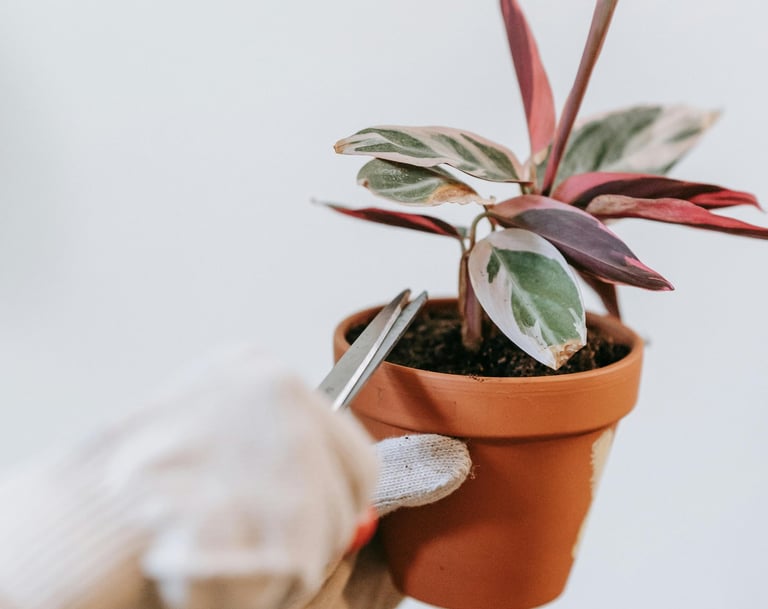

Key Points:
Studies on Biostimulants: Research shows biostimulants reduce stress during pruning, aiding faster recovery. This key study highlights their effectiveness in reducing stress.
How They Work: Biostimulants boost plant growth by enhancing nutrient uptake, stress resistance, and root development. Natural compounds like seaweed extract activate hormones and enzymes, speeding up recovery.
Practical Applications: Use biostimulants like seaweed extracts before pruning to build resilience to stress, and immediately post-pruning to enhance healing.
Expert Advice: Horticulturists recommend biostimulants for managing plant stress before and after pruning.
Our Experience: We've successfully used seaweed extract and other biostimulants in our nursery to promote faster recovery and reduce pruning stress. We believe prevention is better than a cure, and biostimulants can play a huge role in preventing and managing stress.
Unintentional Benefit: Pretreating plants with seaweed extract helps cuttings root faster due to absorbed auxins, boosting propagation success. Auxins are rooting hormones that are naturally found in seaweed extract.
Detailed Exploration Of Biostimulants That Reduce Stress When Pruning
A biostimulant is a substance or microorganism that, when applied to plants or their environment, enhances natural processes to improve plant growth, development, and stress tolerance. Unlike traditional fertilizers, which primarily provide essential nutrients, biostimulants work by stimulating the plant's natural physiological processes, resulting in healthier, more resilient plants. They can promote nutrient uptake, increase resistance to abiotic stress (such as drought or heat), and improve crop quality and yield. In our experience, biostimulants can make a significant impact on plant health when introducing stressors, like pruning.
Definition Of Biostimulants: Biostimulants are substances or microorganisms that, when applied to plants or the rhizosphere, stimulate natural processes to enhance nutrient uptake, nutrient efficiency, stress tolerance, and crop quality, independent of their nutrient content, as defined by the European Biostimulant Industry Council (EBIC).


Biostimulant Profile: Seaweed Extract
Seaweed is an incredibly complex plant biostimulant that contains several compounds that help to reduce plant stress. It's a common additive that's usually available at most horticultural shops, and for good reason. We've seen huge successes using seaweed to reduce stress when pruning, so we use it commercially on our nursery stock and mother plants. Seaweed extract is scientifically proven to help plants bounce back faster after pruning, and we've experienced this first hand ourselves.
Where To Buy Seaweed Extract: Maxicrop, Envii, Doff, Empathy, Empathy Ready Mixed, Alga-sol, Multi-Mite, and Vitax. For those with larger houseplant collections, you can purchase 10 litre bottles, which reduces the cost.
How To Use Seaweed Extract: You can either use it as a foliar spray or a liquid additive. When applying with water, follow the manufacturer's dosage instructions on the label. We like to use both methods of application for different reasons. When applied via foliar application, seaweed can offer a quick reduction in stress, with the added bonus of promoting side branching, which we love! We've experienced the results of this first hand in our nursery, and we've had great success using it to reduce stress and to get plants to bush out without pruning. In our experience, Ficus trees respond extremely well to foliar applications of seaweed, we've found that it promotes side branching almost as much as using keiki paste. We feel that it's important to note here that seaweed water can cause stains, leaving black watermarks on leaves, sometimes permanently. We've found that pale or variegated plants can be particularly vulnerable to this, most notably Monstera Albo, variegated Tradescantia, or Aglaonema Ghost leaves. Our favourite food, formulex, contains a filtered version of seaweed that is more suitable for foliar application, so we'd recommend using that for sensitive plants.
Research That Shows How Seaweed Extract Helps To Reduce Plant Stress After Pruning
The following listed studies suggest that seaweed extract can help to reduce stress and aid in recovery after pruning. We use seaweed to treat our plants when repotting, pruning, or propagating here at the nursery, and we highly recommend this to help your plants when pruning. These studies show how seaweed helps to reduce stress in plants:
Physiology and Molecular Biology of Plants: A review article published in this journal highlights how seaweed extracts can mitigate both biotic (living organisms) and abiotic (environmental) stresses in plants. The bioactive compounds in seaweed, such as amino acids, lipids, and phytohormones, activate several signalling pathways and defence-related genes/enzymes, promoting plant growth and resilience.
Frontiers in Marine Science: Another study reviewed the use of seaweed extracts to enhance plant resilience to various stresses. The extracts were shown to improve nutrient uptake, boost growth performance, and activate defence mechanisms in plants.
Wageningen University and Research: Research from this institution summarized the benefits of seaweed-based biostimulants under abiotic stress conditions, such as drought and salinity. The extracts were found to enhance nutrient uptake and improve growth performance in crops.
Abdel-Mawgoud et al.: In pruned plants treated with seaweed extracts, there was enhanced bud break and shoot growth. Findings included increased antioxidant activity, with higher levels of SOD and CAT enzymes, and improved yield. Link to study.
Zhang and Schmidt:, demonstrated that seaweed extracts improved stress tolerance by enhancing antioxidant activity. Link to study.
The Science Behind Seaweed: How It Reduces Stress During Pruning
Cellular Protection: Seaweed extracts contain osmoprotectants like betaines, which help maintain cell turgor and prevent cellular damage under stress conditions. This ensures that plant cells remain healthy and functional even after pruning.
Hormonal Regulation: Compounds like cytokinins, auxins, and gibberellins in seaweed extracts regulate plant growth and development. These hormones promote the formation of new shoots, leaves, and roots, aiding in plant recovery after pruning.
Activation of Defense Mechanisms: Seaweed extracts contain bioactive compounds like laminarin and fucoidan, which activate plant defense mechanisms. This enhances the plant's resilience to stress and helps it recover more quickly from pruning.
Enhanced Nutrient Uptake: Seaweed extracts improve soil health and nutrient availability, ensuring that plants have access to the resources they need for regrowth. This is particularly important after pruning, as plants require adequate nutrients to support new growth.
Improved Soil Structure: The organic matter in seaweed extracts improves soil structure, increasing its ability to retain water and nutrients. This creates an optimal environment for root growth and plant recovery.
Biostimulant Profile: Humic and Fulvic Acids
Humic and fulvic acid have long been used by the plant community to boost indoor plants, however, they can be hard to find in isolated forms. It's usually best to use a product that already contains humic or fulvic, or to use natural sources. We've seen first hand how effective humic and fulvic acids are at reducing stress when pruning, so we can't recommend them enough. It's been scientifically proven that they help promote resilience, which in turn helps to reduce stress when pruning, and we've experienced the results of this first-hand, ourselves. We love humic and fulvic that much that we add it to all of our soil mixes, and we use it as a supplement where needed to help reduce stress when pruning our nursery stock or mother plants.
Where To Find Natural Sources Of Humic & Fulvic Acid: These beneficial biostimulants are formed as plant material such as leaves, bark, and wood decompose over time. They can be found in various natural sources, including aged compost, healthy organic-rich soil or vermicompost, and the sticky, tar-like substance known as shilajit found in high mountain ranges. Blackstrap molasses, made from sugarcane, is also a good source of fulvic acid minerals. Peat does contain humic and fulvic acid, however, due to environmental concerns about the loss of habitat for wildlife and stored carbon being released, we do not recommend the use of this non-renewable resource for home gardening.
Where To Buy Humic Extract: Available as a soil additive and in a liquid form. Some fertilizers, like our favourite, formulex, come pre-formulated with humic and fulvic acid sources. We have great experience using worm castings to add humic and fulvic acid, although, the concentrations can vary from brand to brand, so always use a good quality source. Blackstrap molasses are a great way to add humic and fulvic naturally, as is shilajit.
How To Use Humic & Fulvic Acids: If you're using a fertilizer form of humic and fulvic, follow the manufacturer's instructions on the packaging. With worm castings, we prefer to add a small handful to the top layer of the soil, before working it in and watering. If you're using Blackstrap molasses, mix it at a ratio of 1/4 to 1/2 tablespoon per litre of water. For shilajit, use a ratio of 1000-2000 mg per litre of water.
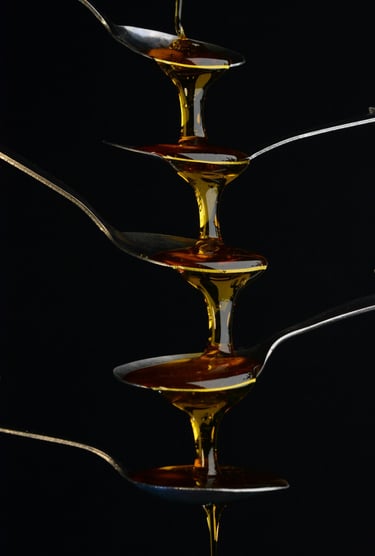

Research That Shows How Humic & Fulvic Acid Promote Resilience To Stress During Pruning
These studies suggest that humic substances can play a significant role in aiding plant recovery by enhancing growth, improving nutrient uptake, and strengthening plant resilience to stress. Humic is an organic compound derived from the decomposition of plant and animal matter that aids in plant recovery and growth after pruning. These studies discuss the importance of humic acid in recovery:
Frontiers in Plant Science: A review article titled “Humic Substances: Determining Potential Molecular Regulatory Processes in Plants” discusses how humic substances (HSs) can strengthen plant tolerance to various kinds of abiotic stresses. The study explains that HSs trigger various molecular processes in plant cells, which can help plants recover from stress.
The Pharma Innovation Journal: This review article explores the significance of humic substances in agriculture, emphasizing their stimulatory effects on plant physiological growth and development. It mentions that HSs can improve total plant biomass and enhance plant development, which can aid in recovery after pruning.
MDPI: A study on pasture recovery periods evaluates the carbon content in soil fractions and the role of humic substances in soil recovery. While this study focuses on pastures, the findings can be extrapolated to understand how humic substances aid in plant recovery in general.
Atiyeh et al.: Application of humic acids to pruned rose bushes led to faster recovery and more robust flowering. Enhanced root biomass indicated improved nutrient uptake capability, and there was a lower incidence of fungal infections at pruning sites. Link to study.
Canellas et al.: showed that humic acids increased maize root growth via auxin-mediated signalling pathways. Link to study.
The Science Behind Humic & Fulvic Acids: How They Reduce Stress During Pruning
Humic and fulvic acids are organic compounds derived from the decomposition of plant and animal matter. These acids play a crucial role in improving soil health and plant resilience, which is particularly beneficial during pruning.
Humic Acids: These larger molecules improve soil structure by enhancing water retention and cation exchange capacity (CEC). They act as a sponge, holding water and slowly releasing nutrients, ensuring a steady supply for plant recovery. This improved soil structure supports healthier root systems, which are essential for plants to bounce back after pruning.
Fulvic Acids: These smaller, more soluble molecules are excellent chelating agents, meaning they can bind to nutrients and make them more available to plants. Fulvic acids enhance nutrient uptake by increasing the permeability of plant cell membranes, allowing for better absorption and utilization of essential nutrients. This increased nutrient availability helps plants recover more quickly from the stress of pruning.
Humic & Fulvic Acids Combined: Together, humic and fulvic acids create an optimal environment for plant growth by moderating water retention, enhancing nutrient availability, and promoting beneficial microbial activity. This comprehensive support system helps plants withstand the stress of pruning and promotes faster recovery and healthier growth.
Biostimulant Profile: Amino Acids and Protein Hydrolysates
Amino acids and protein hydrolysates play a significant role in reducing stress in plants, particularly during pruning. Research has shown that both amino acids and protein hydrolysates can improve nutrient uptake and stress tolerance in plants after pruning. We've had great experiences adding amino acids to our plant care routines, and have seen a great reduction in stress, along with several other benefits, like detoxifying heavy metals, maintaining turgor pressure, and increasing growth.
Where To Find Natural Sources Of Amino acids: These beneficial biostimulants can be found in natural sources such as well-aged compost, plant-based protein sources like legumes and cereals, and animal by-products through enzymatic hydrolysis. Additionally, substances like shilajit, found in mountainous regions, contain a high concentration of humic substances, including amino acids and protein hydrolysates. We have great experience using worm castings to add natural sources of amino acids, although, the amount included can vary between brands, so always purchase a good quality product.
Where To Buy Amino & Protein Hydrolysates: Our favourite way to give our plants amino acid is to use a fertilizer with them already included, like our favourite, forumlex. You can also buy other products that contain amino acid, but always check the labels to ensure that there are no interactions with other products that you use, as they often contain more ingredients. Some notable products are Empathy Afterplant, which also has mycorrhizal fungi and seaweed, and their fertilizer, Empathy After Plant Evergreens, which contains the same ingredients plus fertilizer. Also available is GS Plant Foods Grower's Honey, which is a fertilizer with added amino acid, and Xpert Nutrients Cal-Mag Amino Liquid, which is a specialist additive with calcium and magnesium. When using Cal-Mag with other fertilizers, it's important to ensure that the nutrients do not conflict and cause nutrient imbalances. Generally, Cal-Mag is compatible with most fertilizers, but it's best to avoid combining it with fertilizers high in phosphates or sulfates, as these can interfere with calcium and magnesium uptake. You can also find amino acids in shilajit, mixed at a ratio of 1000–2000 milligrams per litre of water, depending on the brand's concentration amount. Always check the label for accurate dosage instructions for different brands of shilajit.
How To Use Amino Acids & Protein Hydrolysates: Most products come in a liquid solution, so check the product label for instructions. If using compost, shilajit, or worm castings, follow the manufacturer's dosage and work the product into the top layer of the soil, or repot the plant in a fresh soil mix with the amino ingredients added in.
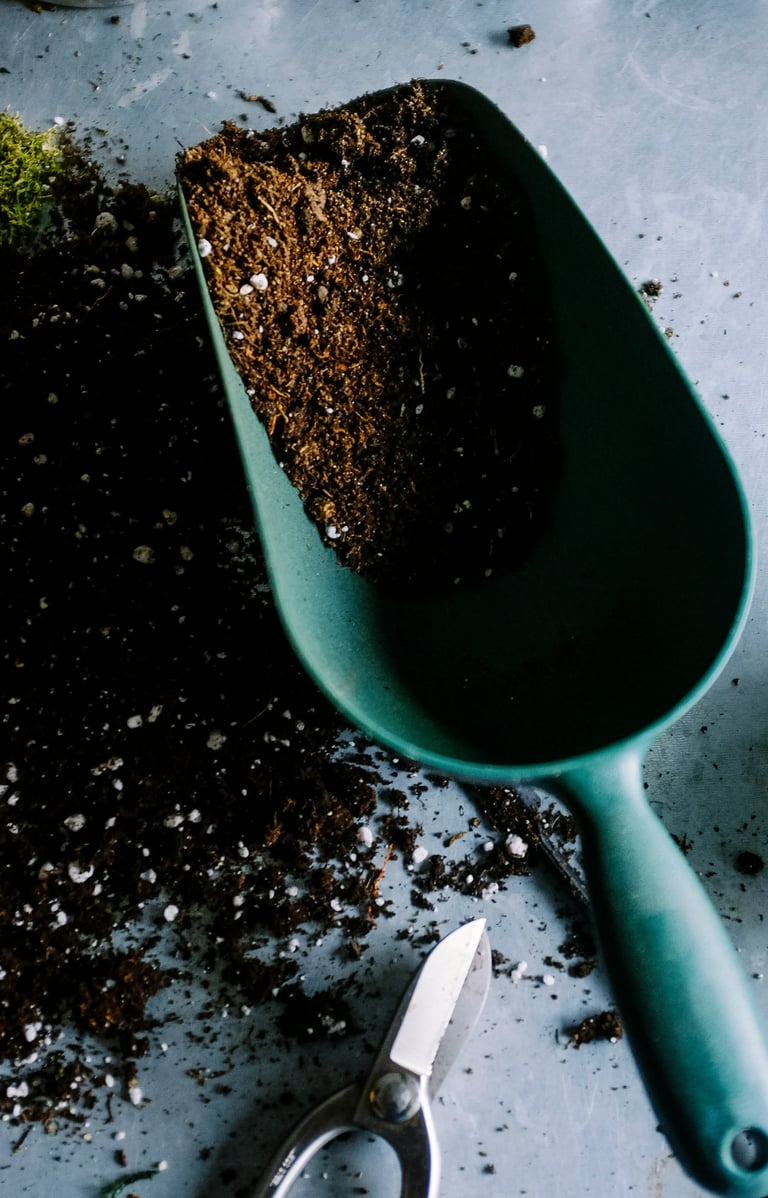

Research On How Amino Acids Can Improve Stress Tolerance In Plants
Colla et al.: This study found that protein hydrolysates enhanced nutrient uptake and stress tolerance in plants. These hydrolysates are produced through the chemical or enzymatic breakdown of protein-rich materials and can alleviate environmental stress, improve plant growth, and increase productivity. Link to study.
Kavi Kishor et al.: This study discusses how amino acids like proline accumulate in plant tissues under stress, acting as osmolytes, regulating ion transport, modulating stomatal opening, and detoxifying heavy metals. Link to study.
Parween et al.: This review article explores the role of amino acids in enhancing stress tolerance in cereal crops, highlighting their involvement in maintaining cellular turgor, osmotic balance, and membrane stabilization. Link to study.
El-Esawi et al.: This chapter provides a comprehensive overview of how various amino acids, excluding proline, contribute to abiotic stress tolerance in crops. Link to study.
The Science Behind Amino Acids & Protein Hydrolysates: How They Reduce Stress During Pruning
Amino Acids: These are the building blocks of proteins and play a crucial role in various physiological processes. When applied to plants, amino acids can enhance nutrient assimilation, improve stress tolerance, and promote cell growth. They provide a source of organic nitrogen, which is essential for plant recovery after pruning. Amino acids also help in the synthesis of defensive biomolecules, making plants more resilient to stress.
Protein Hydrolysates: These are mixtures of polypeptides and free amino acids resulting from the enzymatic or chemical hydrolysis of proteins. Protein hydrolysates improve plant growth by providing a readily available source of nutrients. They enhance root development, increase nutrient uptake, and stimulate the immune system of plants. This comprehensive support helps plants recover more quickly from the stress of pruning.
Stress Tolerance: Both amino acids and protein hydrolysates can alleviate the negative impacts of environmental stressors, such as drought and salinity. By improving nutrient availability and promoting healthy growth, they help plants withstand the shock of pruning and recover more efficiently.
Enhanced Growth: The application of amino acids and protein hydrolysates can lead to increased yield and improved quality characteristics of plants. They support the synthesis and activity of enzymes, regulate gene expression, and maintain redox-homeostasis, which are all vital for plant health and recovery.
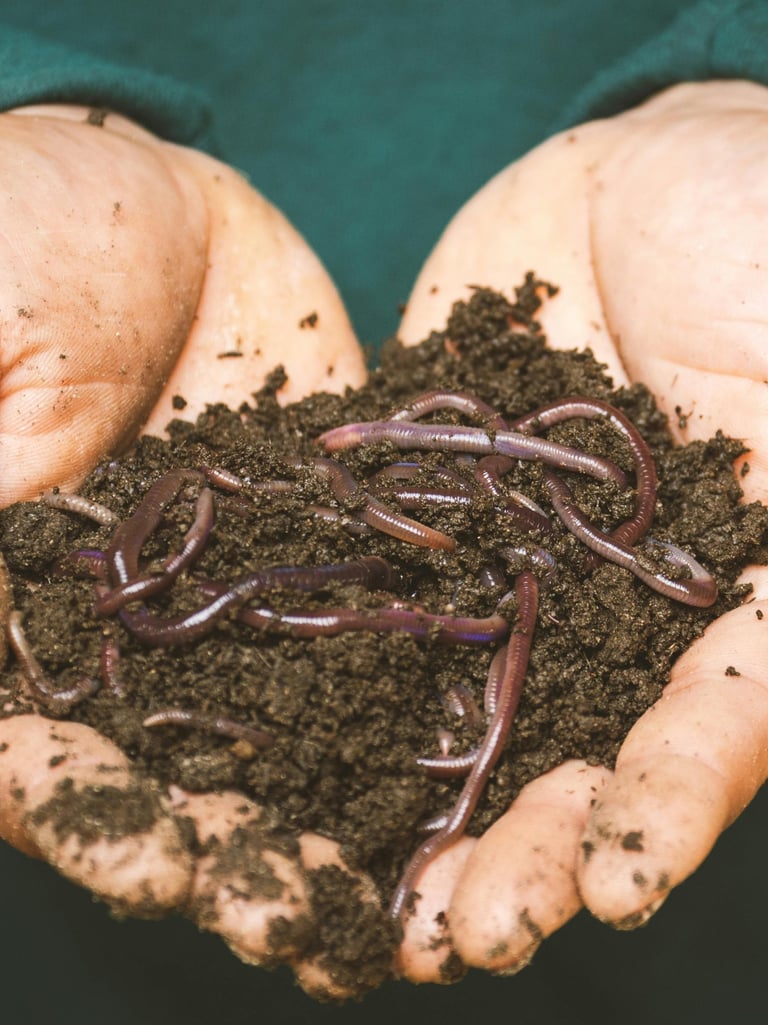

Biostimulant Profile: Mycorrhizal Fungi
Mycorrhizal fungi are invaluable additions to plants for several reasons, aside from reducing stress during pruning, their most notable benefit is that they extend the plant's root system out, allowing them to uptake nutrients and water from a larger area than they would naturally. Mycorrhizal fungi are fascinating organisms that establish symbiotic relationships with the roots of most terrestrial plants, enhancing plant resilience and health. We have extensive experience using mycorrhizal fungi, as it was one of the first biostimulants that we started to use at our houseplant nursery. We've found that it not only helps to reduce stress when repotting or during propagation, but also during pruning. We always have a large bag of mycorrhizal fungi to hand, and we can't recommend its use enough. We mix it in with rooting hormone to speed up propagation, and we apply it to roots before pruning to reduce stress.
Where To Find Natural Sources Of Mycorrhizal Fungi: These beneficial organisms can be found in various environments. Incorporating compost into your potting mix can introduce mycorrhizal fungi, as compost contains organic matter that supports fungal growth. We have great experience using worm castings to add natural sources of mycorrhizal fungi, however, products can vary, so always buy from a reputable source. Additionally, using organic fertilizers like rotted manure or fish mix emulsion can promote the presence of mycorrhizal fungi in your houseplants' soil. You can find natural mycorrhizal fungi in well rotted mulch or soil collected from healthy forests or meadows, but be aware of the risk of pest and disease transmission when introducing it to houseplants.
Where To Buy Mycorrizal Fungi: TNC, Empathy Root Grow, Envii Root Well, Vitax Q4, Vitax Q4 Plus, RootMax, and Dynomyco. You can also find it in compost, and fish emulsion. We prefer BioBizz Fish Mix Liquid, and UK Grow Fish Formula Emulsion. You can also get fish emulsion fertilizers for an all-in-one additive.
How To Use Mycorrizal Fungi: Mycorrhizal fungi must come into contact with the plant roots to be effective. You can achieve this during pruning without repotting your plant by making a few small holes that expose some roots. Sprinkle the mycorrhizal fungi powder into these holes at the rate recommended by the manufacturer, then fill the holes back in. Water thoroughly and avoid direct sunlight for 24 hours, as this can damage the fungi.
Research On How Mycorrhizal Fungi Can Improve Stress Tolerance In Plants
Smith and Read: The study provides a comprehensive overview of how mycorrhizal associations enhance host plant stress tolerance. The authors detail the mechanisms by which mycorrhizal fungi improve plant resilience to various environmental stresses, such as drought, salinity, and nutrient deficiencies. Link to study.
Naheeda Begum et al.: This review discusses the role of arbuscular mycorrhizal fungi (AMF) in enhancing crop productivity under stressful conditions such as drought, salinity, and extreme temperatures. AMF assist host plants in up-regulating tolerance mechanisms and prevent the down-regulation of key metabolic pathways. Link to study.
Abeer Hashem et al.: This chapter explores the mechanisms by which AMF improve plant stress tolerance, including antioxidant system support, osmolyte accumulation, and selective ion absorption. Link to study.
Xiancan Zhu et al.: This study examines how AMF symbiosis improves plant tolerance to stress by enhancing water and nutrient uptake, improving photosynthetic capacity, and protecting plants against oxidative damage. Link to study.
The Science Behind Mycorrhizal Fungi: How It Reduces Stress During Pruning
Enhanced Nutrient Uptake: Mycorrhizal fungi increase the surface area of plant roots, allowing for better absorption of water and essential nutrients like phosphorus and nitrogen. This improved nutrient uptake helps plants recover more quickly from pruning by providing the necessary resources for new growth.
Improved Water Retention: These fungi help plants retain water more effectively, which is crucial during pruning, when plants may experience increased water loss due to the removal of foliage. By maintaining better hydration, mycorrhizal fungi support plant health and resilience.
Stress Tolerance: Mycorrhizal fungi can enhance a plant's tolerance to various environmental stresses, including drought and temperature fluctuations. This increased stress tolerance helps plants withstand the shock of pruning and promotes faster recovery.
Enhanced Root Development: The symbiotic relationship with mycorrhizal fungi promotes healthier and more extensive root systems. Strong root systems are essential for plant stability and recovery after pruning, as they provide a solid foundation for new growth.
Activation of Defence Mechanisms: Mycorrhizal fungi can trigger the plant's natural defence mechanisms, making it more resilient to stress and disease. This activation of defence responses helps plants recover more efficiently from pruning and other stressors.
Biostimulant Profile: Plant Growth-Promoting Rhizobacteria (PGPR)
Beneficial organisms, such as Bacillus subtilis and Pseudomonas fluorescens, can enhance plant growth and increase stress tolerance. They induce systemic resistance, enhancing the plant's innate defence mechanisms, synthesizing hormones like auxins, gibberellins, and cytokinins. Additionally, PGPR can solubilize phosphorus, fix atmospheric nitrogen, and produce siderophores that chelate iron, making it more available to plants. These bacteria also produce ACC deaminase, which lowers ethylene levels in plants, reducing stress responses and promoting healthier growth. By improving nutrient uptake and enhancing plant resilience, PGPR play a crucial role in sustainable agriculture and horticulture.
Where To Find Natural Sources Of Rhizobacteria: Adding compost to your potting mix can introduce beneficial rhizobacteria, as compost often contains organic matter that supports microbial growth. We have great experience using worm castings to add rhizobacteria, although, products can vary, so always use a good quality vermicompost. Collecting small amounts of soil from healthy, natural environments, such as forests or meadows, and mixing it into your houseplant soil can introduce rhizobacteria, but be aware of the risk of pest and disease transmission. Using organic fertilizers like well-rotted manure or fish emulsion can promote the presence of rhizobacteria in your houseplants' soil. Allowing leaf litter to decompose on the soil surface or using well-rotted organic mulch can help establish rhizobacteria.
Where To Buy Rhizobacteria PGPR: Canna, and Biobizz both contain PGPR, but you can also find it in organic compost, well rotted manure (we like Levington Organic Farm Yard Manure) and in fish emulsion. We like BioBizz Fish-Mix Liquid, and UK Grow Fish Formula. You can also get fish emulsion based fertilizers for an all-in-one method.
How To Use Rhizobacteria: If using a liquid additive, follow the manufacturer's instructions on the label. If you're using compost or manure, add a handful to the top of the soil, and work it in, before watering thoroughly.


Research On How Rhizobacteria Can Increase Stress Tolerance In Plants
Vacheron et al.: This study reviewed PGPR roles in stress tolerance and growth promotion. PGPR can enhance nutrient uptake, alter hormone homeostasis, and improve tolerance to abiotic stresses. Link to study.
Enebe & Babalola: This study reviews how PGPR can help plants tolerate abiotic stresses. The application of PGPR can enhance plant resilience and productivity under stressful conditions. Link to study.
Chattaraj et al.: This review explores the role of PGPR in alleviating stress and enhancing plant resilience. PGPR can improve soil structure, increase water retention, and promote the synthesis of osmoprotectants, which can help plants to have a greater resilience to stress. Link to study.
Chieb & Gachomo: This study highlights how PGPR can trigger plant drought stress responses at physiological, morphological, and molecular levels. Link to study.
The Science Behind Rhizobacteria: How It Reduces Stress During Pruning
Rhizobacteria, also known as Plant Growth-Promoting Rhizobacteria (PGPR), play a significant role in reducing stress in plants, including during pruning. Here's how they work:
Induced Systemic Resistance (ISR): Rhizobacteria can trigger a plant's natural defence mechanisms, known as ISR. This helps the plant to better resist diseases and pests, reducing stress and promoting healthier growth.
Nutrient Uptake Enhancement: PGPR can improve the availability and uptake of essential nutrients like nitrogen and phosphorus. This ensures that plants have the necessary resources to recover from pruning and support new growth.
Hormone Production: Rhizobacteria produce plant hormones such as auxins, cytokinins, and gibberellins, which promote root and shoot growth. These hormones help plants recover more quickly from pruning by stimulating new growth and branching.
Antimicrobial Compounds: Some rhizobacteria produce antimicrobial compounds that can suppress plant pathogens, reducing the risk of infections and diseases that can stress the plant.
Stress Tolerance: PGPR can enhance a plant's tolerance to various environmental stresses, such as drought and salinity. This increased resilience helps plants withstand the shock of pruning and recover more efficiently.
Biostimulant Profile: Silicone
If you've never heard of adding silicone to plants as a biostimulant, then you may be surprised to hear that it has several benefits for plants, including improving resistance to stress. Although we commonly use it as a sealer or as a replacement for plastic, it's actually a compound that plants need to thrive. We've seen great success with adding silicone to plants that struggle with see through bits on their leaves, like variegated Monstera plants, however, it can be useful to reduce stress when pruning similar to the other biostimulants that we've listed.
Where To Find Natural Sources Of Silicone: Natural sources of silicon for houseplants can be found in materials like sand, perlite, and vermiculite, which are commonly used in potting mixes. Additionally, organic sources such as rice hulls and horsetail tea are rich in silica and can be added to soil or compost to provide a slow-release source of this beneficial element. These natural sources help strengthen plant cell walls, improve nutrient uptake, and enhance resistance to environmental stresses.
Where To Buy Silicone For Plants: Shogun liquid additive and Growth Technology Liquid Silicone are both great choices. We like to use RAW silica, as it can be used without adjusting the pH of the water solution, which in our experience can be frustrating when looking after larger collections. The powder form is a quick and easy supplement for plants to reduce stress without complicated adjustments and pH testing kits.
How To Use Silicone: Follow the manufacturer's instructions on the label. If using liquid, you may need to check the pH of the final solution to ensure the safety of your plants. For this reason, we always recommend choosing the powdered form of silica.
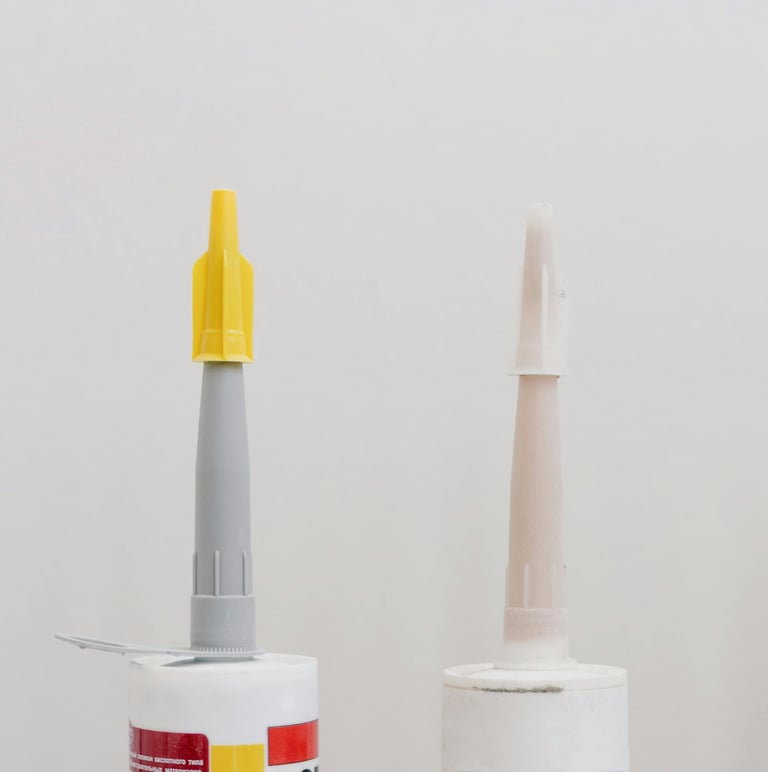

Research On How Silicon Can Increase Stress Tolerance In Plants
Yaldız & Tüzel: This study investigated the impact of silicon fertilizer and branch pruning on plant yield and post-harvest shelf life. The results showed that silicon application improved plant growth and yield, even under pruning stress. Link to study.
Tardieu et al.: This study explored the use of foliar silicon application to mitigate environmental stresses. The results indicated that silicon-treated plants showed improved physiological resilience and water-use efficiency. Link to study.
The Science Behind Silicone: How It Reduces Stress During Pruning
Strengthening Cell Walls: Silicon deposition in plant tissues strengthens cell walls, making them more resistant to mechanical damage and environmental stresses. This is particularly beneficial during pruning, as it helps plants recover more quickly from cuts.
Enhanced Nutrient Uptake: Silicon improves the efficiency of nutrient uptake, ensuring that plants have access to essential nutrients needed for recovery and growth. This is crucial after pruning, as plants need to rapidly regenerate tissues.
Improved Water Use Efficiency: Silicon helps plants regulate water loss by reducing transpiration rates. This is important during pruning, as it helps plants maintain hydration and reduces the stress associated with water loss.
Increased Photosynthesis: By enhancing chlorophyll production and photosynthetic efficiency, silicon supports better energy production in plants. This increased energy availability aids in the recovery process after pruning.
Stress Tolerance: Silicon has been shown to improve plant tolerance to various environmental stresses, such as drought, salinity, and diseases. This overall resilience helps plants withstand the shock of pruning and recover more effectively.
Other Biostimulants
Selenium: This can be an effective biostimulant, but its effectiveness can vary depending on the application method and concentration. Research has shown that selenium can enhance plant metabolism, improve antioxidant enzyme activities, and increase the synthesis of primary and secondary metabolites. It also helps in improving stress tolerance and crop quality. However, there is a narrow range between beneficial effects and toxicity, so careful application is necessary.
Chitosan & Other Biopolymers: These can be quite effective as biostimulants, but their effectiveness can vary depending on the specific application and plant species. Chitosan, for example, has been shown to enhance plant growth, improve nutrient uptake, and increase resistance to diseases and environmental stresses. It works by inducing plant defence mechanisms and regulating metabolic processes, which can help to reduce stress when pruning.
How To Apply Biostimulants To Reduce Stress When Pruning
Pre-Pruning Application (1-2 Weeks Before Pruning): Biostimulants should be applied 1–2 weeks before you plan to prune. This allows the plants enough time to absorb the nutrients and build up resilience. This pre-treatment prepares them to handle the stress of pruning more effectively.
Post-Pruning Application (24 Hours After Pruning): Treat plants with biostimulants 24 hours post-pruning to maximize the benefits. This immediate post-pruning application helps to kickstart the recovery process by providing essential nutrients and promoting new growth. We've found using foliar sprays to be most effective after pruning, as it offers the fastest intake of the biostimulants. Please note that when using seaweed, if you use a product that is dark, it may stain your leaves. We prefer to use a product like formulex that has been filtered to prevent black watermarks on leaves.
Follow-Up Treatments: Continue applying biostimulants every 2–4 weeks during the active growing season. This ongoing support ensures that plants receive consistent nutrients and growth-promoting compounds, helping them to thrive and maintain resilience throughout the season.
Methods and Dosage: Follow the specific instructions on the biostimulant product you are using for the best results. This usually includes proper dilution rates and application methods, whether through soil or foliar application. Foliar application offers rapid uptake through leaf stomata and cuticles, ideal for nutrients and compounds with systemic activity, like seaweed extract. Foliar sprays offer a rapid intake of the stress reducing biostimulant, allowing a quicker mode of action. If adding soil ingredients like compost or vermicompost, work them into the top layer of soil in the pot, or repot the plant with a fresh houseplant soil mix including the biostimulants. If using mycorrhizal fungi, ensure that the powder touches the plant roots directly, or the fungi will not benefit your plant. We recommend making a few small holes that expose the roots, adding the powder, filling the holes, then watering in thoroughly.
Compatibility: Ensure compatibility of the biostimulants with your plants and other care products. Some biostimulants work best when combined with other treatments (like humic and fulvic), while others may require specific conditions (like mycorrhizal fungi touching the roots) to be most effective.
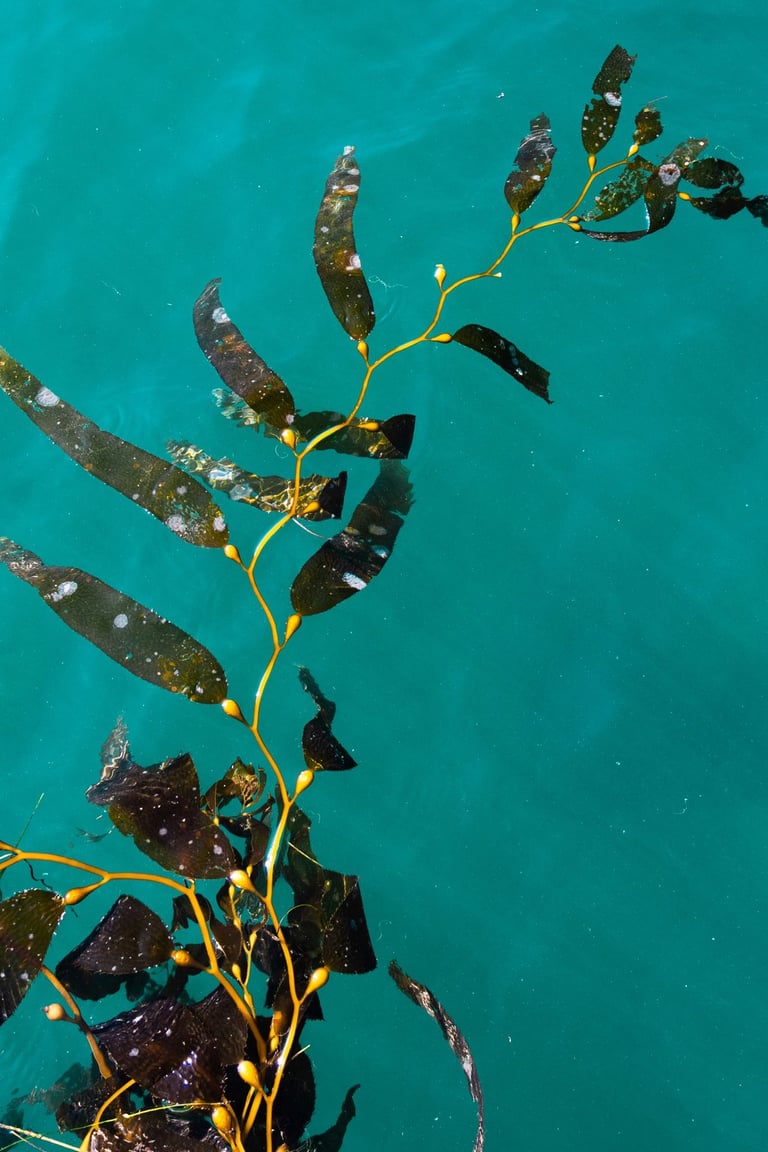

Tips When Using Biostimulants To Reduce Pruning Stress
Choose the Right Biostimulants: Select biostimulants that are specifically designed to help with stress tolerance and recovery, such as seaweed extracts, humic and fulvic acids, amino acids, protein hydrolysates, silicone, and mycorrhizal fungi, like we've listed in this section of the article.
Follow the Recommended Dosage: Always adhere to the manufacturer's instructions regarding the dosage and application rates. Overapplication can be harmful to plants, causing toxicity or nutrient burn. When products contain NPK, be cautious of interactions with your normal feeding routine. Make sure the biostimulants are compatible with your plants and other care products you are using. Some biostimulants work best when combined with other treatments, like fulvic and humic acid, while others may require specific conditions to be most effective, like mycorrhizal fungi needing to touch the plant roots to work.
Timing is Key: Apply biostimulants 1–2 weeks before pruning to prepare the plants, and again 24 hours after pruning to support recovery. Follow-up treatments every 2–4 weeks during the active growing season can help maintain plant health.
Hydrate Plants Well: Ensure plants are adequately watered before and after applying biostimulants. Proper hydration helps with the absorption and effectiveness of the biostimulants.
Use Proper Application Methods:
Soil Application: Incorporate biostimulants into the soil around the plant's base. Water thoroughly to ensure the biostimulants reach the roots. A flood and drain technique is useful to ensure that all the root ball is saturated with the biostimulant.
Foliar Application: Spray diluted biostimulants directly onto the leaves, ensuring even coverage. This method provides a quick nutrient boost and supports new growth. We like to use foliar applications of seaweed where possible, as the biostimulant is absorbed faster through the leaves, however, it can cause staining and black watermarks, so use with caution. We prefer to use formulex, as it contains filtered seaweed which doesn't stain leaves.
Combine Methods for Best Results: Use a combination of soil and foliar applications to provide comprehensive support to your plants, and where budget allows, combine biostimulants together to give a multipronged approach. All the biostimulants that we've listed on this page can be used together, as long as you don't combine two biostimulants that come in fertilizer form. This could exceed the recommended dosage of NPK, and you could burn your plants. When combining biostimulants together, try to buy single source ingredients, or use a product like formulex, which comes with most biostimulants already included in safe dosages. If using formulex, you can still add mycorrhizal fungi and rhizobacteria.
Aftercare: After applying biostimulants, avoid exposing plants to direct sunlight for 24 hours. This helps prevent any potential damage to the biostimulants and allows for better absorption. Keep an eye on your plants' response to the biostimulants. Look for signs of improved growth, reduced stress, and overall health. Adjust your application methods if necessary. Regular application of biostimulants can help maintain plant health and resilience. Consistency is key to ensuring long-term benefits.
Use Proper Sanitation During Pruning: When cutting plants, you can transmit disease and pathogens if pruning shears are not sterilized in-between each cut. We also recommend fully sanitising shears both before and after use.
Cut With Confidence: Be confident when cutting plants, trying to use clean, clear-cuts that remove the plant matter in one go. Repeated cutting with blunt tools can cause damage to cells, which can invite in disease. If you cannot make clean cuts with your tools, consider sharpening them or purchasing a new set of shears.
Pruning Aftercare: Along with the regular application of biostimulants, follow proper plant care and ensure that the plant is kept in the right environment for the species. Adding artificial lighting during the darker months will help to aid recovery. This will help to promote faster recovery from pruning, and help to reduce stress.
The Science Behind Pruning: Why Plants Get Stressed When Cut
Pruning causes stress in plants by disrupting their flow of water and nutrients, creating open wounds that can lead to infections, and reducing their ability to make energy through photosynthesis. This stress can show up as wilting, yellowing leaves, slower growth, and a higher risk of disease. Using biostimulants can help plants recover faster and stay healthier after pruning. Let's explore the science behind why plants get stressed during pruning:
Disruption of Water and Nutrient Transport: When you prune a plant, you cut through the stem, which acts as the plant's transportation system for water, nutrients, and sugars. The stem contains the xylem, which transports water and dissolved minerals from the roots up to the rest of the plant, and the phloem, which moves the sugars (products of photosynthesis) and other nutrients from the leaves to other parts of the plant where they are needed for growth and energy. This disruption can hinder the plant's ability to distribute these vital resources effectively, hampering growth and recovery.
Hormonal Imbalances: Pruning affects the balance of plant hormones that regulate growth and stress responses, such as auxins, cytokinins, and ethylene. This imbalance can slow down growth and make it harder for the plant to recover from the pruning cuts. Adding these hormones back through biostimulants can help to mitigate some of the stress. Amino acids contain ethylene, and seaweed contains auxins and cytokinins, so by using these products when pruning, you help to rebalance the plant's hormones that are impacted by stress, which can speed up recovery when pruning plants.
Exposure to Pathogens: Open wounds from pruning create entry points for pathogens like bacteria, fungi, and viruses. This increases the risk of infections, which can further stress the plant and impact its overall health. Biostimulants can help to increase plant resistance to disease. For example, products like seaweed extracts, rhizobacteria, and mycorrhizal fungi contain compounds that stimulate the plant's natural defence mechanisms. These biostimulants can activate the production of defensive enzymes and antimicrobial compounds, enhancing the plant's ability to fend off infections. Additionally, beneficial microbes in some biostimulants can outcompete harmful pathogens in the root zone, providing an added layer of protection. By using biostimulants, you can help your plants build a stronger defence system, reducing the risk of disease and promoting healthier growth and recovery after pruning.
Reduced Photosynthesis: Removing leaves during pruning decreases the plant's ability to perform photosynthesis, the process by which plants convert light energy into chemical energy for food. This reduction in energy production can slow down growth and make it harder for the plant to recover. Some biostimulants, like seaweed, contain vital nutrients that can help to replenish the plant before it grows new foliage to create more energy.
Oxidative Stress: Pruning wounds can generate reactive oxygen species (ROS), which are harmful molecules that cause oxidative damage at the cellular level. This stress can impair the plant's overall function and slow down recovery. Biostimulants can help mitigate oxidative stress caused by pruning. Biostimulants, such as seaweed extracts, amino acids, and microbial inoculants, contain compounds that enhance the plant's antioxidant defence system. These compounds help neutralize reactive oxygen species (ROS) and reduce oxidative damage, promoting healthier recovery and growth.
Energy Allocation to Wound Healing: After pruning, plants must allocate energy and resources to heal the wounds. This can divert resources away from growth and development, leading to slower recovery and reduced vigor. Biostimulants can help mitigate this stress by providing additional nutrients and compounds that support the plant's metabolic processes. For example, amino acids and protein hydrolysates supply organic nitrogen and essential amino acids that aid in wound healing and tissue regeneration. Seaweed extracts contain growth hormones and minerals that promote cell division and recovery, allowing plants to recover from pruning faster.
Summary Of Biofertilizers For Stress Reduction In Houseplants
Pruning-induced stress poses significant challenges to plant health, affecting growth, productivity, and resistance to environmental stresses. Incorporating biostimulants into post-pruning care offers a scientifically backed strategy to mitigate these stresses. Through hormonal modulation, enhanced antioxidant defences, and improved nutrient dynamics, biostimulants facilitate faster recovery and promote vigorous growth.
Adopting an integrated approach that combines proper pruning techniques with the judicious use of biostimulants and ongoing monitoring will optimize plant health and contribute to sustainable horticultural practices.
Additional Resources
Scientific Articles:
Calvo, P., Nelson, L., & Kloepper, J. W. (2014). Agricultural uses of plant biostimulants. Plant and Soil, 383(1–2), 3–41.
du Jardin, P. (2015). Plant biostimulants: Definition, concept, main categories, and regulation. Scientia Horticulturae, 196, 3–14.
Books:
Biostimulants for Crops from Seed Germination to Plant Development by Youssef Rouphael et al.
Web Resources:
European Biostimulant Industry Council (EBIC): Comprehensive information on biostimulant definitions, regulations, and industry news.
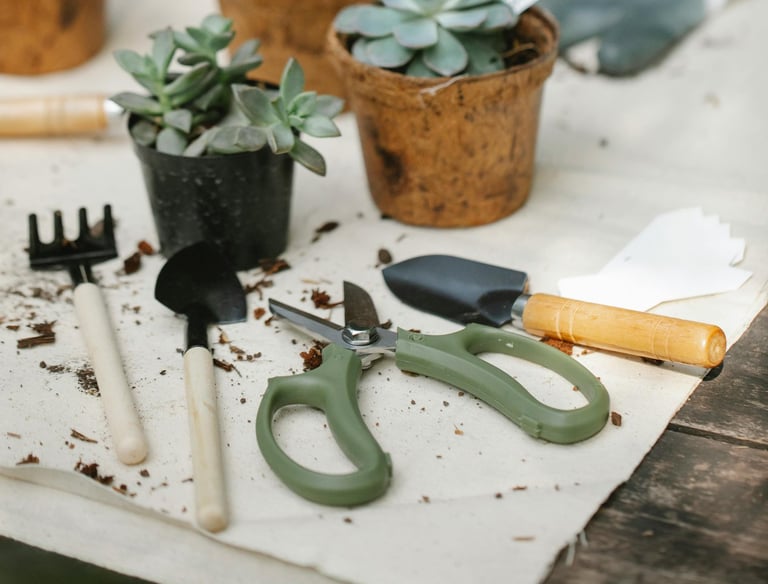

Edited & Fact Checked By: The Houseplant Shop
Article Published: 31st January 2025


About The Houseplant Shop:
Independent Houseplant Nursery
Horticultural Specialists
Managing Over 250 Houseplant Species Onsite
Over 15 Years Of Experience With Horticulture
As head of horticulture, Sarah manages the care and propagation of over 250 plant species at a commercial houseplant nursery. With over 15 years of experience in horticulture, specializing in houseplants, Sarah has extensive expertise in plant biology, soil science, and integrated pest management. She continually reviews and integrates the latest research into her plant care guides. Dedicated to educating others, Sarah has spent years diagnosing houseplant care issues and sharing her real-world experience. Her commitment to scientific accuracy and helping people diagnose plant health issues has established her as a trusted authority and expert in the field.
The Houseplant Shop is a dedicated houseplant nursery, growing all of their own stock from their botanical library of over 250 houseplant species. The nursery staff are horticultural experts who have dedicated their lives to cultivating and nurturing over 250 different species of houseplants, focusing on Aroids, tropical plants, and NOID collectables. All their plants are grown in house in Britain to be more environmentally friendly. The nursery is proud to have been featured by the Royal Horticultural Society (RHS) as a 100% peat free nursery.
Recommended Further Reading:
People also looked at: Pruning. Propagation, Fertilizer, Lighting, Artificial Lighting, Temperature, Watering, and Houseplant Care Guides By Species.
How We Reviewed This Article:
Our horticultural experts continually monitor the houseplant space, and we update our articles when new information becomes available. We are committed to providing current and reliable information. If you have some information that you think would be helpful in this article, we'd love to hear from you. Our team works hard to revise articles for factual accuracy, and we regularly update our pages with new information, techniques, tips, images, trade secrets, and real world experience from the team here at the houseplant nursery. You can find a list of the article updates below.
Written By: Sarah Brooks, Head of Horticulture
Article Received: 21st January 2025
Copyright: The Houseplant Shop (https://thehouseplant.shop)
The use, distribution, or reproduction is permitted, provided the original copyright owner is credited and that the original publication on this website is cited with a direct link to the article, only with these terms. Any other use is not permitted.
List of Article Updates:
N/A
Author Bio:
Author: Sarah Brooks
Head of Horticulture at The Houseplant Shop
